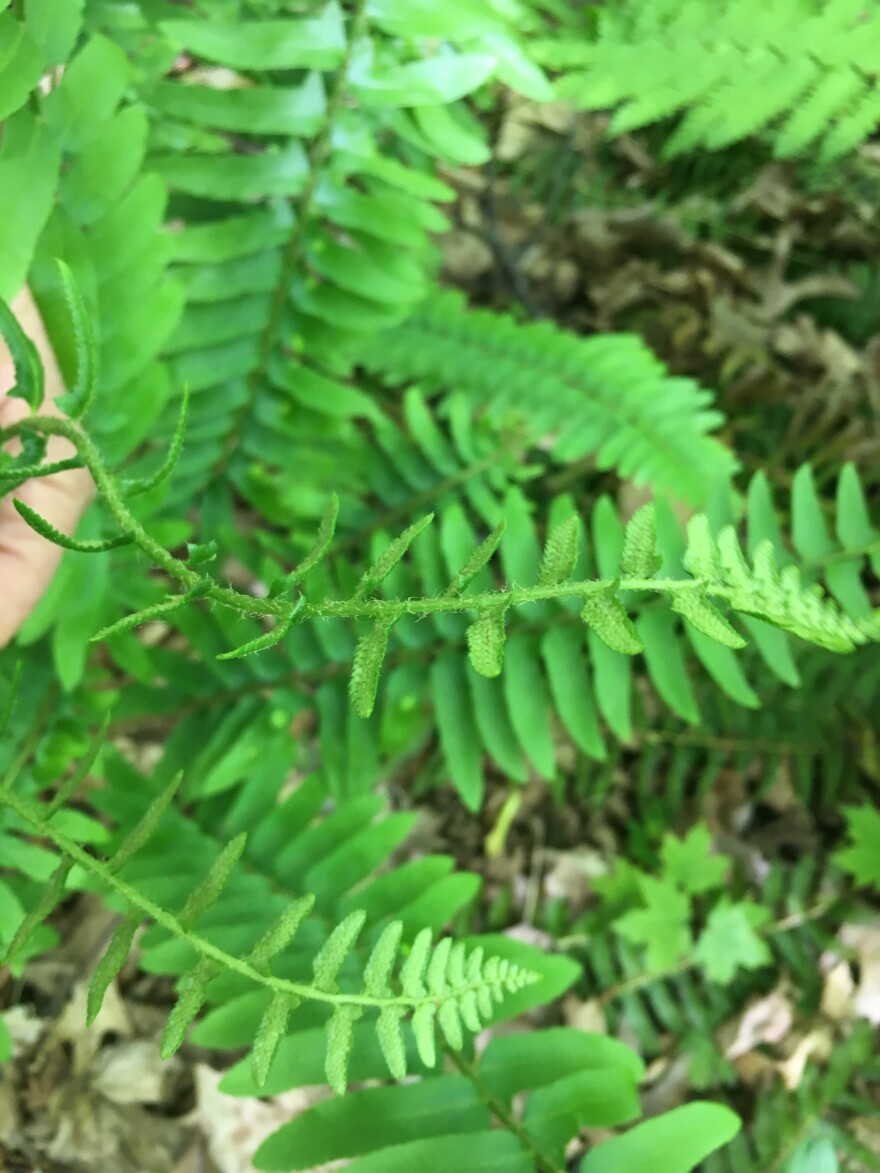At a certain point during mud season in New England, you can go to any number of restaurants and find fiddleheads on the menu.
That young, small, coiled, edible fern is called the Ostrich Fern (Matteuccia struthiopteris).
Author and forester Lynn Levine cautions readers in her new fern identification book, "Identifying Ferns The Easy Way: A Pocket Guide to Common Ferns of the Northeast," not to confuse the edible fern with two similar-looking types that don't taste good, and could cause digestive distress.
"People don't know that every fern has a fiddlehead as part of their stage. Beautiful green — that looks like spring green — and it doesn't have a lot of tufts on it," Levine said.
Levine talked with me about ferns and habitats while visiting the woods in Sunderland, Massachusetts.


Lynn Levine: Most people think that all ferns are alike, to begin with. A fern is a fern is a fern. And so many people have looked at my book and gone, "I cannot believe it that they look so different from each other!"
So I'll take out my book, so I can explain it.
The biggest way to understand the book, which is based on how many "cuts" there are — and what's different about this book is that it shows you, illustrated, with like a scissor, say, it's "once-cut." That means there's a "leaf." And then it's cut into just "leaflets."

So when you go and you find that — there's only five common ferns that are like that. Instead of all the ferns, you can just narrow it down pretty quickly to which group it is. So that's the methodology.
But also how we use the words in our book are simple. There's a language for ferns —
Carrie Healy, NEPR: It's like a foreign language.
Exactly. We've provided a dictionary in the beginning of the book, saying what are the words that are used in more sophisticated fern books. So there's this sense of coming away with your own language, and being empowered.
So, can I ask you a question? How would you describe one of these fronds?

It's very simple in its construction. It doesn't have many cuts on each of the tiny little leaflets.
Exactly. So you got there immediately.
It has a slow taper to the to the top of the stalk, or whatever you might call it.
Right, right. And if you look underneath the tallest ones —
It's a little hairy, and it's a little lighter in color under the leaflets.
Yes. And right now, the spore cases are starting to form.
And they look like little round bumps —
Right, the ones that are the tallest — that would spread the spores more. And a spore is "four spores to a thread of hair" tiny. So you did a really good description.


Lynn, what is it?
You want to know?
I do!
Okay. So that's my job. I would go to the "silhouettes," and one of them looks the most like this "once-cut." So I would say Christmas Fern.
So as a part of the forestry plans that you're working on, it fits naturally that you take a look at the ferns as well?
Yeah. I do an inventory of what's out there, what the flowers were, what birds do I hear what the trees, and the Lycopodiums. So I was writing down the ferns — but I didn't have a good resource to get do it.
What's a Lycopodium?
Lycopodium is one of the original plants, too. There were mosses and ferns and Lycopodiums. And the Lycopodiums and the ferns were as tall as trees 400 million years ago.
My whole mission is to encourage people to go out in the woods — to get out there and look at it.















